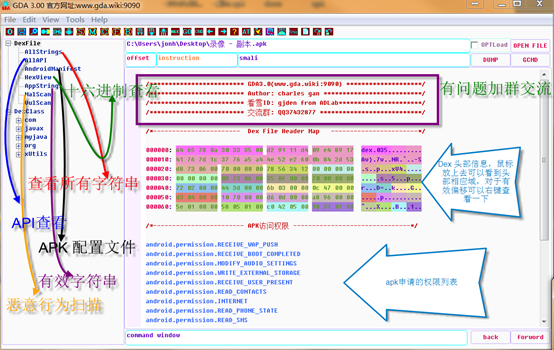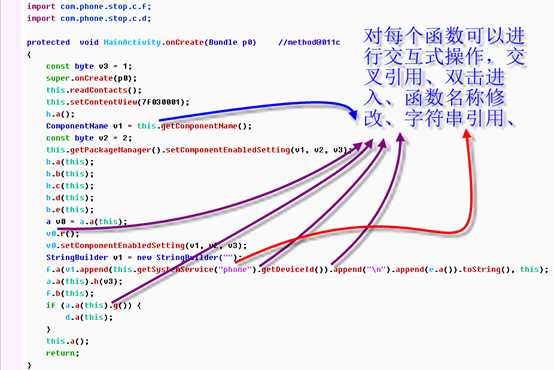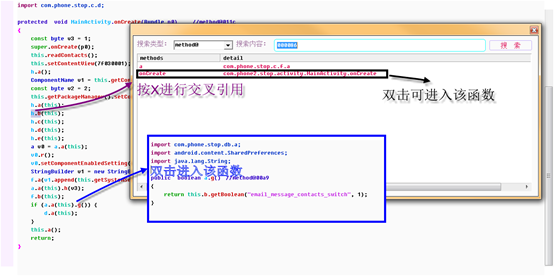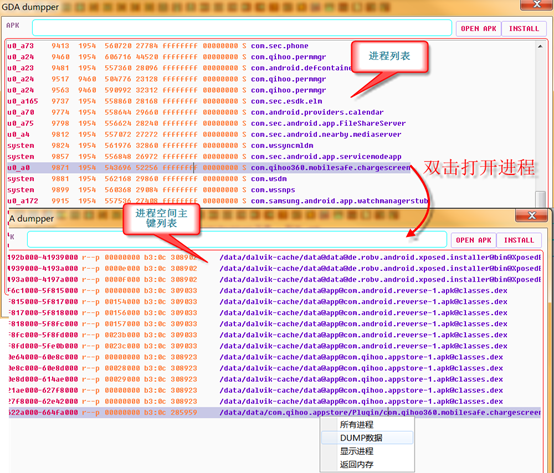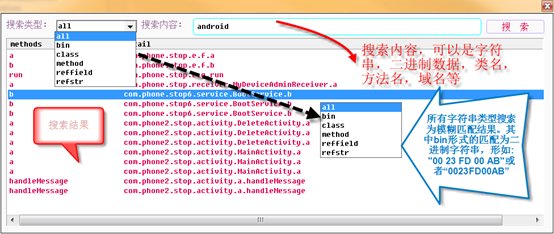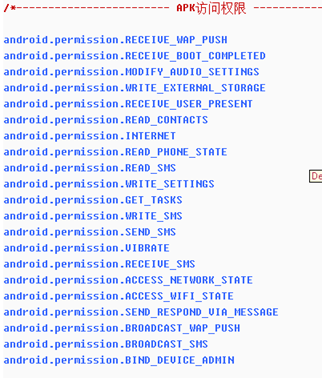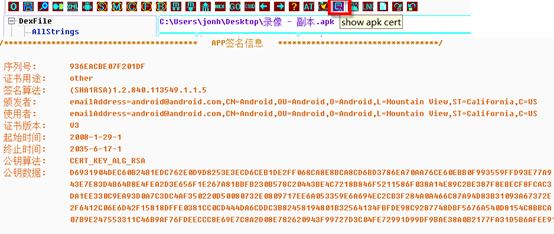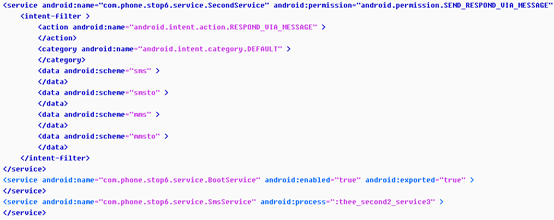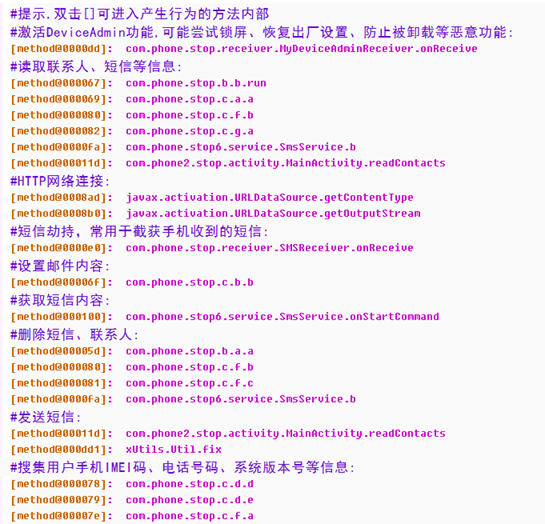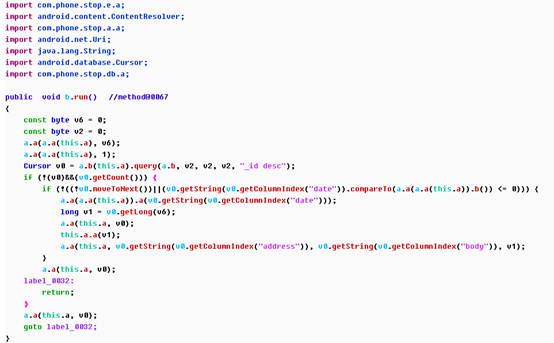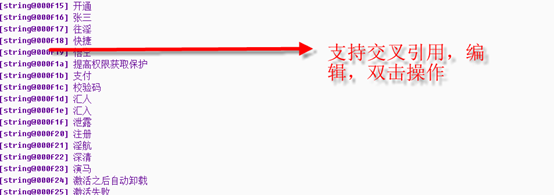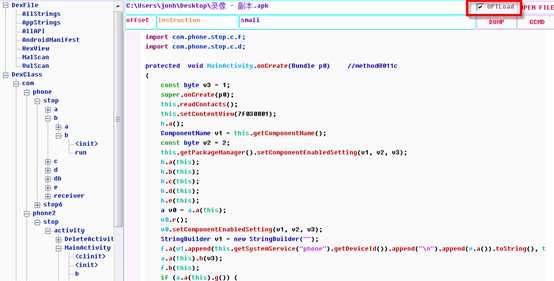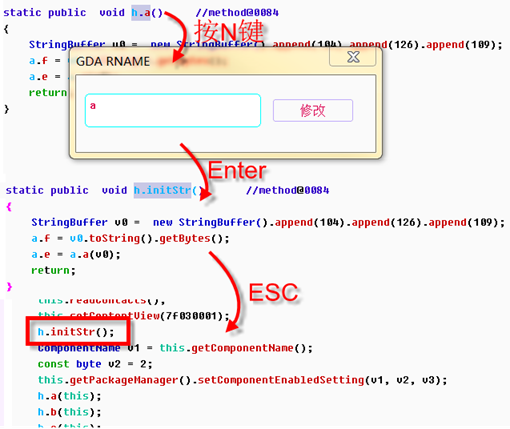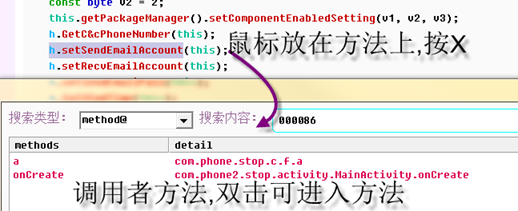-
Notifications
You must be signed in to change notification settings - Fork 528
Home
GDA3 introduction(the new version download)
GDA is a succinct, portable, fast interactive Android decompiling tool, It provides powerful static analysis function, and currently supports APK, DEX, ODEX, oat type of Android file.
GDA get rid of the use of the slow speed of Java, using the C++ to complete analysis of the core function . And as the use of the bytecode directly to Java pseudo code, no need to convert the Smali assembly after decompiling, so it greatly improve the parsing speed.
This tool provides many useful sub-tools, such as check shell(protection software), ODEX to DEX, Oat to DEX, XML binary parser, algorithm tool, Android device memory dump and so on. In the interactive analysis, provides a string, method, and domain cross references query, function query, the caller query, comments, and analysis results saving, and so on. I rewritten all Decompiler code basing on Decompiling theory for GDA3, And the disassembly engine, data flow analysis, interlingua optimization, structured analysis and so on,they have all made significant changes.And I also optimized the DEX parsing engine, malicious behavior detection engine, checking shell engine, compared with GDA1 and GDA2, The speed, stability and experience of the analysis are all great improvement and upgrading.
一、Main Interface Opening the GDA and draging the APK file that you want to analyze to the software interface:
If the APP is reinforced(protected), the GDA will automatically identify the reinforcement and display between the Dex header and the APK permissions, as shown in fig:
Click OPTLoad to enter the APK's entry function:
In assembly code area, you can decompile the current method by F5.
Double click into the called function, and X cross reference looks at the caller.
二、Shortcut key
Shortcut key function description
GDAShortcut key
快捷键 功能说明 X Cross referencing, locating callers (strings, classes, methods, field, Smali, Java) Esc/<-/Backspace Back to the last visit -> The next access method or class G Jump to the specified offset address N The cursor is placed on the variable/method/class name, and it can be modified S Global Searching for all the elements. C Comments,only supports the Java code Dblclick The cursor is placed at the method/str, double-click to access method or str data. M the cursor is placed on the smali line and pressing M,and edit the instruction UP Focus on the left tree and press it to access the previous method Down Focus on the left tree and press it to access the next method D Dump the binary data of the method, only supports the Smali window Enter The input modification for all edit boxes takes effect H 16 decimal show Ctr+A Select All Ctr+C Copy Ctr+V Paste, only applies editable controls Ctr+X Cut, only applies editable controls Ctr+F Find the string of the current window Ctr+S Save the current modification and generate the GDA database file
三、Auxiliary tool
1.Binary XML decoding
Fully autonomous decoding IS able to circumvent the decoding technique and successfully parse XML.
2.Algorithmic Tool
The tool implements encryption and decryption functions。the implemented algorithms is following: Hash: md2 md4 md5 sha sha1 sha224 sha256 sha384 sha512 Symmetric:des idea rc2 rc4 rc4-40 rc2-40 rc2-64 bf cast5 aes(128 192 256)and which module such as:ecb cbc ofb cfb,others:cfb1 cfb8 Asymmetric:RSA Coding:base62, base64 https://pic1.zhimg.com/v2-68f62e88330fab1b5acfedef6fea9198_b.png
https://pic1.zhimg.com/v2-2dd4d1ea9453972b03f0ac97d50def80_b.png
3.Dump tools
Specific use of reference to know:
https://zhuanlan.zhihu.com/p/26341224
4.Search tools(S)
四、Examples OF Android Malware Static analysis
This section introduces the basic usage of GDA through a Malware sample file.
A.Profiling
The purpose of the brief analysis is to make a simple understanding and mastery of APK as a whole,Here's a Android malware as an example to introduce the use of GDA.
-
First, you can drag the sample directly into GDA, and very quickly we can see the analysis results of the main interface. We judge whether there is reinforcement according to the brief results. if there is reinforcement, the main interface will show tip.if there is no indication, no reinforcement.
-
Then you can check that the virus opens the scan sensitive permissions, from the main interface, we can see ta lot of sensitive permissions are enable .
-
We see the signature information of the APK through clicking the toolbar that follows the red markup.
4.Next, you can analyze the Activity, Service, receive and so on through the “AndroidManifest” in the tree frame.
5.Next, you can also understand the malware's roughly malicious behavior through the MalScan in the tree frame.
It can be seen that the malware has a lot of malicious manipulation. The list following Behavior description is the method of generating malicious behavior of this type. Double click method@ to access this method,For example, click enter the second description ” #读取联系人、短信等信息:” And [method@000067]: com.phone.stop.b.b.run
It's hard to see Smali. Check the decompile code by F5. Figure:
It can be seen that this method has realized the reading of the message box, and the analysis of the method is introduced later.
6.In addition, the analysis can also be done by looking at the string and API used by the APK. Where “AllStrings” gets all the strings of the APK, and “AllStrings” only gets all the strings that the Dex uses, and relatively AppStrings is a more useful string. The string@ region also supports cross referencing (X), editing (right-click menu), and double clicking.
The method@ region of AllAPI supports cross referencing functions
B、Detailed analysis
Detailed analysis is a comprehensive analysis for the malicious software execution logic and implementation process, the following brief introduction to the basic usage of GDA.
click OPTLoad to enter the execution entry function of APK, and the onCreate function of MainActivity is the first execution function of the APK.
In order to efficiently analyze the entire APK, we need to identify the methods or classes that are identified, and GDA supports the modification of the method name and comments.
double-clicking h.a();entering this method.
You can see that the method is just a initialization of the strings, so we modify the function name “initStr”.
By the same way, we can modify all the identified methods .
Sometimes you need to make a further description, so you can use the comment function (C).。
Many times you need to look at the caller of the current method, and you can see it by cross referencing.
Sometimes you also need to know where the current string is being used. You can put the mouse between string double quotes, and press X to see the reference method.
Logic and flow analysis need to identify each method, as far as possible covering all the important methods for functional identification.
